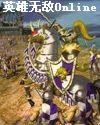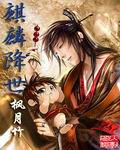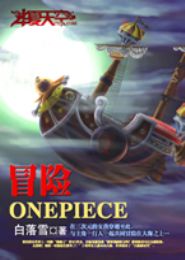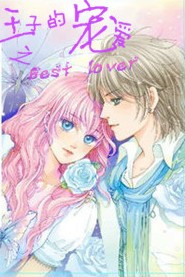beacon lights of history-iii-2-第23部分
按键盘上方向键 ← 或 → 可快速上下翻页,按键盘上的 Enter 键可回到本书目录页,按键盘上方向键 ↑ 可回到本页顶部!
————未阅读完?加入书签已便下次继续阅读!
in another age; and burn with inextinguishable brightness to
remotest generations; as examples of the power of faith and truth
in this wicked and rebellious world;a world to be finally
redeemed by the labors and religion of just such men; whose days
are days of sadness; protest; and suffering; and whose hours of
triumph and exaltation are not like those of conquerors; nor like
those whose eyes stand out with fatness; but few and far between。
〃I have loved righteousness; I have hated iniquity;〃 said the great
champion of the Mediaeval Church; 〃and therefore I die in exile。〃
In ten years after this ignominious execution; Raphael painted the
martyr among the sainted doctors of the Church in the halls of the
Vatican; and future popes did justice to his memory; for he
inaugurated that reform movement in the Catholic Church itself
which took place within fifty years after his death。 In one sense
he was the precursor of Loyola; of Xavier; and of Aquaviva;those
illustrious men who headed the counter…reformation; Jesuits indeed;
but ardent in piety; and enlightened by the spirit of a progressive
age。 〃He was the first;〃 says Villari; 〃in the fifteenth century;
to make men feel that a new light had awakened the human race; and
thus he was a prophet of a new civilization;the forerunner of
Luther; of Bacon; of Descartes。 Hence the drama of his life
became; after his death; the drama of Europe。 In the course of a
single generation after Luther had declared his mission; the spirit
of the Church of Rome underwent a change。 From the halls of the
Vatican to the secluded hermitages of the Apennines this revival
was felt。 Instead of a Borgia there reigned a Caraffa。〃 And it is
remarkable that from the day that the counter…reformation in the
Catholic Church was headed by the early Jesuits; Protestantism
gained no new victories; and in two centuries so far declined in
piety and zeal that the cities which witnessed the noblest triumphs
of Luther and Calvin were disgraced by a boasting rationalism; to
be succeeded again in our times by an arrogance of scepticism which
has had no parallel since the days of Democritus and Lucretius。
〃It was the desire of Savonarola that reason; religion; and liberty
might meet in harmonious union; but he did not think a new system
of religious doctrines was necessary。〃
The influence of such a man cannot pass away; and has not passed
away; for it cannot be doubted that his views have been embraced by
enlightened Catholics from his day to ours;by such men as Pascal;
Fenelon; and Lacordaire; and thousands like them; who prefer
ritualism and auricular confession; and penance; monasticism; and
an ecclesiastical monarch; and all the machinery of a complicated
hierarchy; with all the evils growing out of papal domination; to
rationalism; sectarian dissensions; irreverence; license; want of
unity; want of government; and even dispensation from the marriage
vow。 Which is worse; the physical arm of the beast; or the maniac
soul of a lying prophet? Which is worse; the superstition and
narrowness which darken the mind and the spirit; or that unbounded
toleration which smiles on those audacious infidels who cloak their
cruel attacks on the faith of Christians with the name of a
progressive civilization?and so far advanced that one of these
new lights; ignorant; perhaps; of everything except of the fossils
and shells and bugs and gases of the hole he has bored in; assumes
to know more of the mysteries of creation and the laws of the
universe than Moses and David and Paul; and all the Bacons and
Newtons that ever lived? Names are nothing; it is the spirit; the
animus; which is everything。 It is the soul which permeates a
system; that I look at。 It is the Devil from which I would flee;
whatever be his name; and though he assume the form of an angel of
light; or cunningly try to persuade me; and ingeniously argue; that
there is no God。 True and good Catholics and true and good
Protestants have ever been united in one thing;IN THIS BELIEF;
that there is a God who made the heaven and the earth; and that
there is a Christ who made atonement for the sins of the world。 It
is good morals; faith; and love to which both Catholics and
Protestants are exhorted by the Apostles。 When either Catholics or
Protestants accept the one faith and the one Lord which
Christianity alone reveals; then they equally belong to the grand
army of spiritual warriors under the banner of the Cross; though
they may march under different generals and in different divisions
and they will receive the same consolations in this world; and the
same rewards in the world to come。
AUTHORITIES。
Villari's Life of Savonarola; Biographie Universelle; Ranke's
History of the Popes。 There is much in 〃Romola;〃 by George Eliot。
Life of Savonarola; by the Prince of Mirandola。
MICHAEL ANGELO。
A。D。 1475…1564。
THE REVIVAL OF ART。
Michael Angelo Buonarrotione of the Great Lights of the new
civilizationmay stand as the most fitting representative of
reviving art in Europe; also as an illustrious example of those
virtues which dignify intellectual pre…eminence。 He was superior;
in all that is sterling and grand in character; to any man of his
age;certainly in Italy; exhibiting a rugged; stern greatness
which reminds us of Dante; and of other great benefactors; nurtured
in the school of sorrow and disappointment; leading a checkered
life; doomed to envy; ingratitude; and neglect; rarely understood;
and never fully appreciated even by those who employed and honored
him。 He was an isolated man; grave; abstracted; lonely; yet not
unhappy; since his world was that of glorious and exalting ideas;
even those of grace; beauty; majesty; and harmony;the world which
Plato lived in; and in which all great men live who seek to rise
above the transient; the false; and puerile in common life。 He was
also an original genius; remarkable in everything he attempted;
whether as sculptor; painter; or architect; and even as poet。 He
saw the archetypes of everything beautiful and grand; which are
invisible except to those who are almost divinely gifted; and he
had the practical skill to embody them in permanent forms; so that
all ages may study those forms; and rise through them to the realms
in which his soul lived。
Michael Angelo not only created; but he reproduced。 He reproduced
the glories of Grecian and Roman art。 He restored the old
civilization in his pictures; his statues; and his grand edifices。
He revived a taste for what is imperishable in antiquity。 As such
he is justly regarded as an immortal benefactor; for it is art
which gives to nations culture; refinement; and the enjoyment of
the beautiful。 Art diverts the mind from low and commonplace
pursuits; exalts the imagination; and makes its votary indifferent
to the evils of life。 It raises the soul into regions of peace and
bliss。
But art is most ennobling when it is inspired by lofty and
consecrated sentiments;like those of religion; patriotism; and
love。 Now ancient art was consecrated to Paganism。 Of course
there were noble exceptions; but as a general rule temples were
erected in honor of heathen deities。 Statues represented mere
physical strength and beauty and grace。 Pictures portrayed the
charms of an unsanctified humanity。 Hence ancient art did very
little to arrest human degeneracy; facilitated rather than retarded
the ruin of states and empires; since it did not stimulate the
virtues on which the strength of man is based: it did not check
those depraved tastes and habits which are based on egotism。
Now the restorers of ancient art cannot be said to have contributed
to the moral elevation of the new races; unless they avoided the
sensualism of Greece and Rome; and appealed purely to those eternal
ideas which the human mind; even under Pagan influences; sometimes
conceived; and which do not conflict with Christianity itself。
In considering the life and labors of Michael Angelo; then; we are
to examine whether; in the classical glories of antiquity which he
substituted for the Gothic and Mediaeval; he advanced civilization
in the noblest sense; and moreover; whether he carried art to a
higher degree than was ever attained by the Greeks and Romans; and
hence became a benefactor of the world。
In considering these points I shall not attempt a minute criticism
of his works。 I can only seize on the great outlines; the salient
points of those productions which have given him immortality。 No
lecture can be exhaustive。 If it only prove suggestive; it has
reached its end。
Michael Angelo stands out in history in the three aspects of
sculptor; painter; and architect; and that too in a country devoted
to art; and in an age when Italy won all her modern glories;
arising from the matchless works which that age produced。 Indeed;
those works will probably never be surpassed; since all the
energies of a great nation were concentrated upon their production;
even as our own age confines itself chiefly to mechanical
inventions and scientific research and speculation。 What railroads
and telegraphs and spindles and chemical tests and compounds are to
us; what philosophy was to the Greeks; what government and
jurisprudence were to the Romans; what cathedrals and metaphysical
subtilties were to the Middle Ages; what theological inquiries were
to the divines of the seventeenth century; what social urbanities
and refinements were to the French in the eighteenth century;the
fine arts were to the Italians in the sixteenth century: a fact too
commonplace to dwell upon; and which will be conceded when we bear
in mind that no age has been distinguished for everything; and that
nations can try satisfactorily but one experiment at a time; and
are not likely to repeat it with the same enthusiasm。 As the mind
is unbounde






